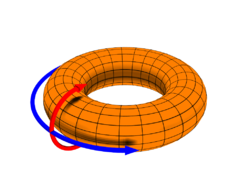
In mathematics, given a group , a G-module is an abelian group on which acts compatibly with the abelian group structure on . This widely applicable notion generalizes that of a representation of G. Group (co)homology provides an important set of tools for studying general -modules.
Contents
The term G-module is also used for the more general notion of an R-module on which acts linearly (i.e. as a group of -module automorphisms).









































